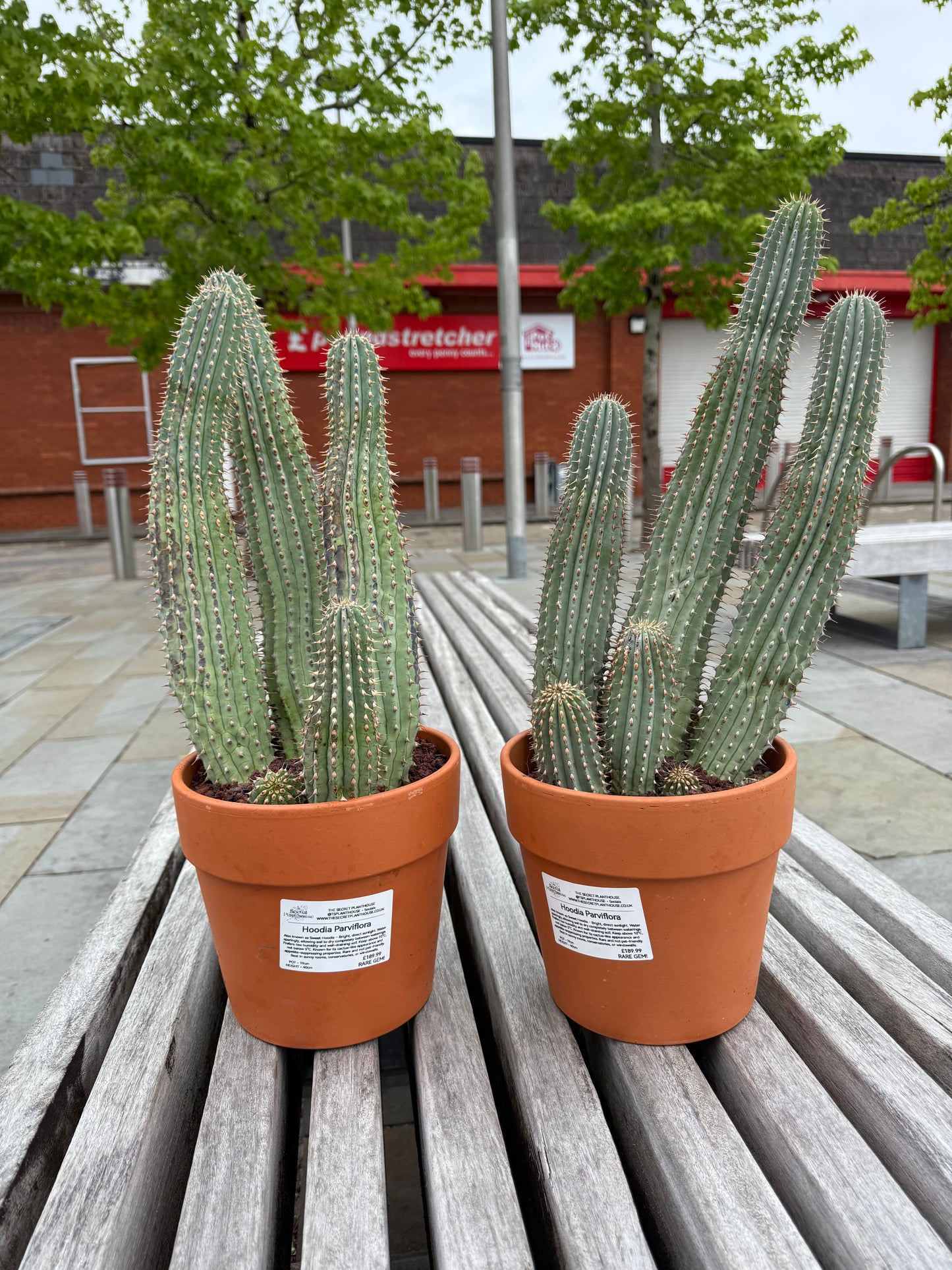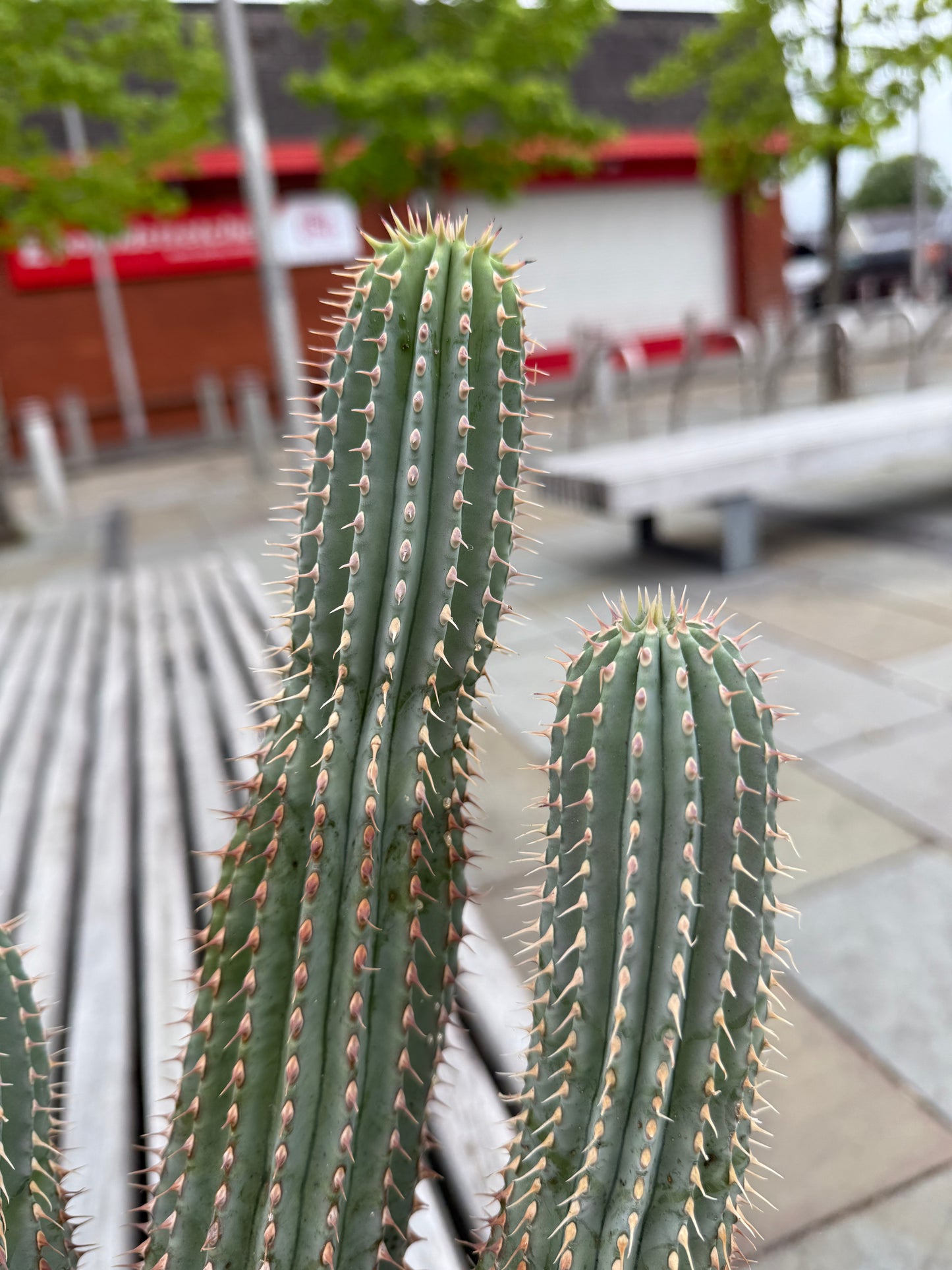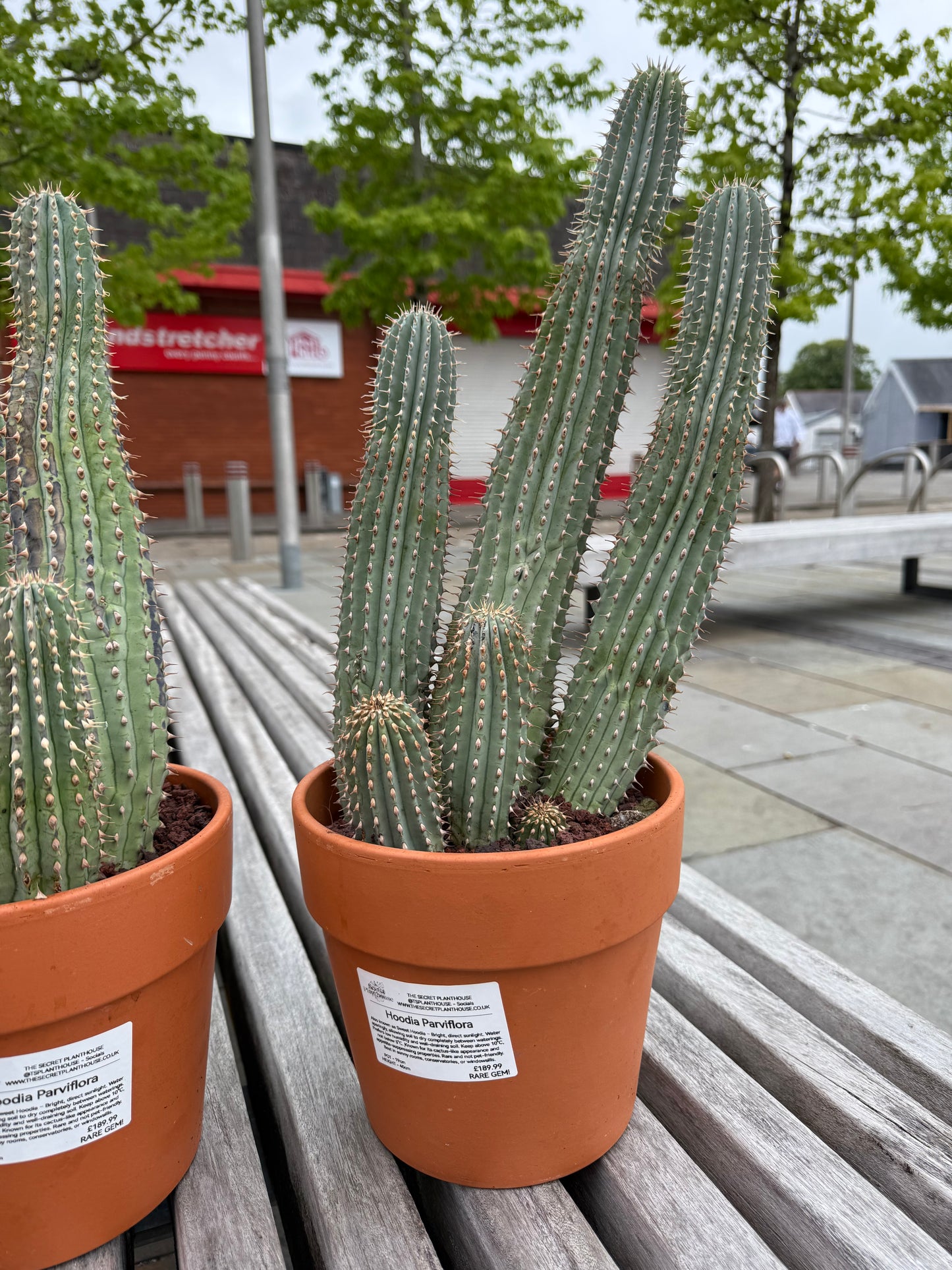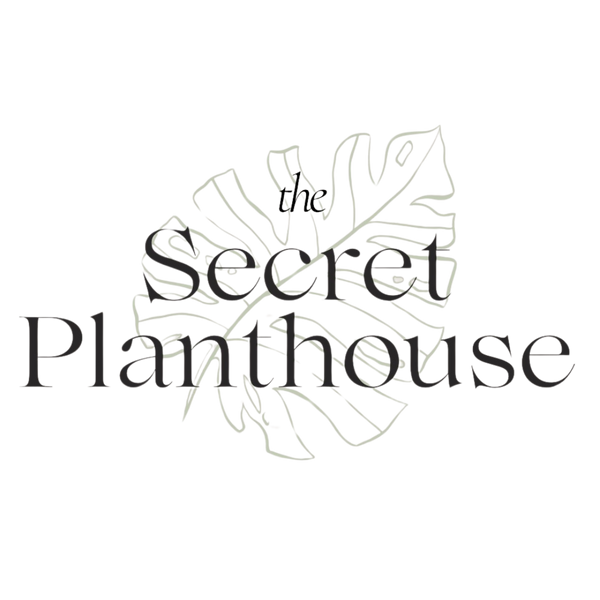The Secret PlantHouse
Hoodia parviflora
Hoodia parviflora
Couldn't load pickup availability
Striking. Succulent. Steeped in desert mystery.
Native to the arid deserts of Namibia and southern Africa, Hoodia parviflora is a slow-growing, clump-forming succulent that belongs to the Apocynaceae family – the same group as milkweeds and stapelias. Known for its cactus-like appearance (despite not being a true cactus), it produces ribbed, green columns covered in tiny spines and, in time, can develop small star-shaped flowers. Traditionally used by San tribes as an appetite suppressant, this desert dweller carries both botanical intrigue and aesthetic charm.
Care Guide
A true low-maintenance desert gem, it’s happiest when left alone:
- Light: Needs full sun to bright, direct light to stay compact and healthy. A south- or west-facing windowsill is ideal.
- Watering: Water deeply but infrequently. Allow soil to dry out completely between waterings. Water even less in winter.
- Humidity: Prefers dry air – keep away from humid rooms like kitchens or bathrooms.
- Temperature: Warmth-loving. Keep between 18–30°C. It can tolerate cool nights but not frost.
- Feeding: Feed sparingly – once every 6–8 weeks in summer with a cactus or succulent fertiliser.
- Soil: Must have very fast-draining soil – use cactus mix with added pumice or horticultural grit.
Best Placement in the Home
Perfect for sun-drenched shelves, succulent windowsills, or minimalist interiors. It pairs beautifully with ceramics and gravel top-dressing to highlight its desert origins.
Rarity & Ease
Rarely offered in cultivation, especially outside of specialist collections, Hoodia parviflora is a true connoisseur’s succulent. Despite its unique appearance, it’s very easy to care for, provided it’s kept dry and bright. A fascinating and tough little plant that thrives on neglect – ideal for collectors and beginners alike.
Note: While related to the species historically used for appetite suppression, this plant is sold for ornamental purposes only.
Share








